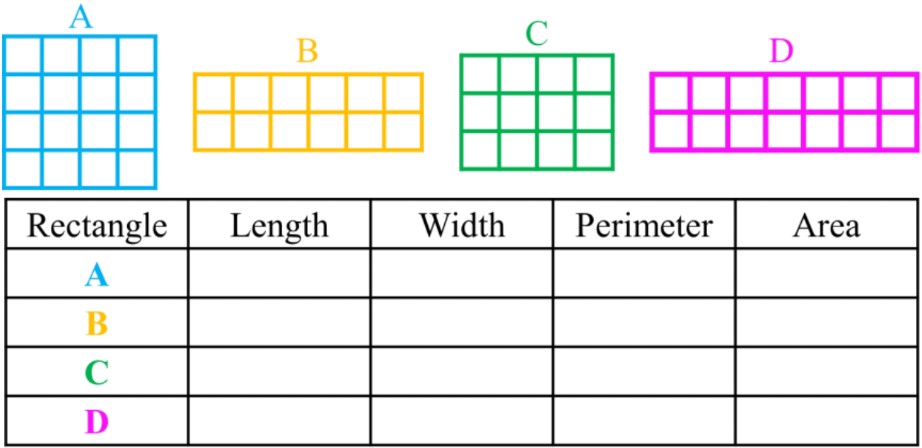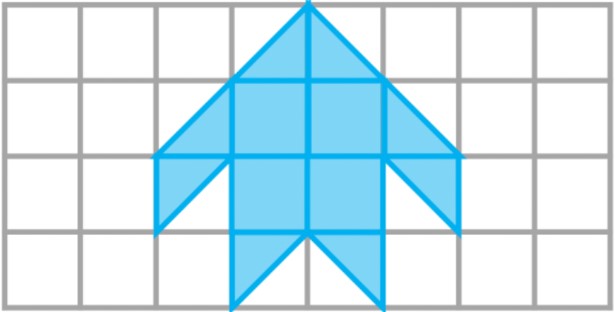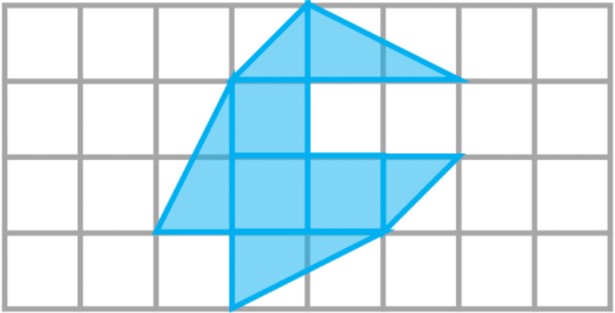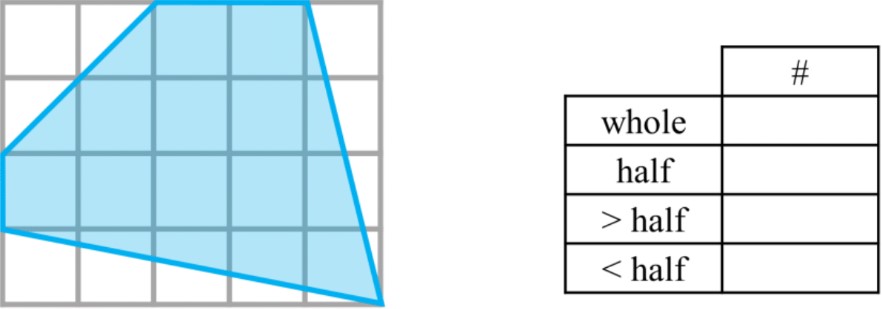Strategies for estimating area and perimeter with unit squares
0/3
Intros
Lessons
- Estimating area for triangles (using unit squares)
- Estimating area for shaded in portions of unit squares
- Example for estimating shaded area on a grid
0/8
Examples
Lessons
- Comparing perimeter and areas of unit square rectangles
- Fill in the table for each rectangle with proper units (cm)

- Using the answers from part a), answer the following questions with the letter of each rectangle:
- Which rectangle has the biggest perimeter? ____
- Which rectangle has the biggest area? ____
- Which rectangles have the same perimeter? ____
- Which rectangles have the same area? ____
- Fill in the table for each rectangle with proper units (cm)
-
Estimating the area of a shaded figure using half unit squares
Estimate the area covered by the shaded figure.
Remember that: and
and 
- Estimating the area of a shaded figure using halves of unit square doubles
Estimate the area covered by the shaded figure.
Remember that: and
and 
- Estimating the area of a shaded figure with different proportions of unit squares
Approximate the area of the shape by filling out the table.






